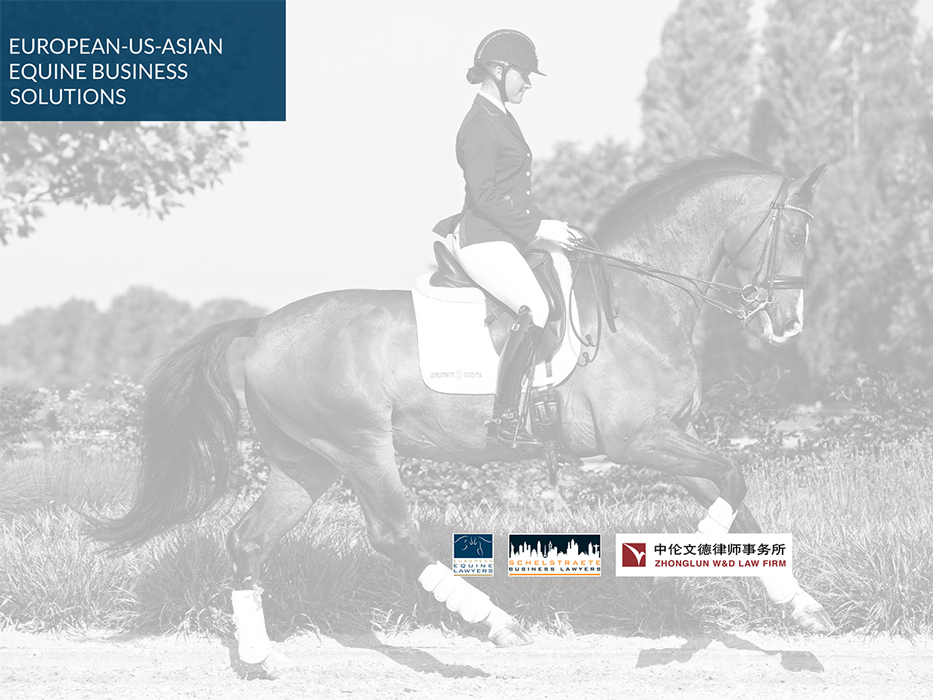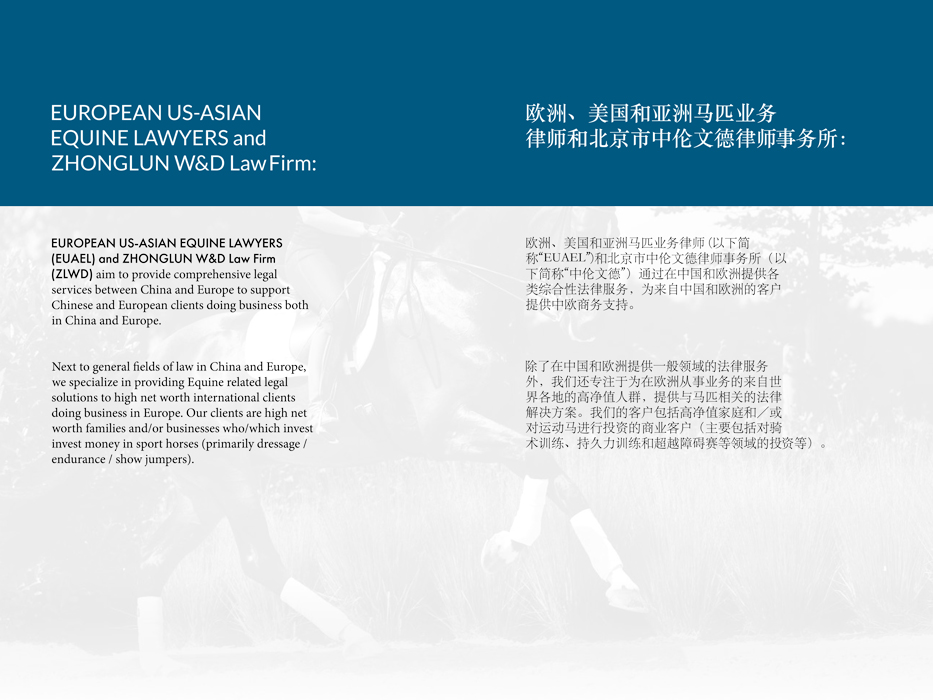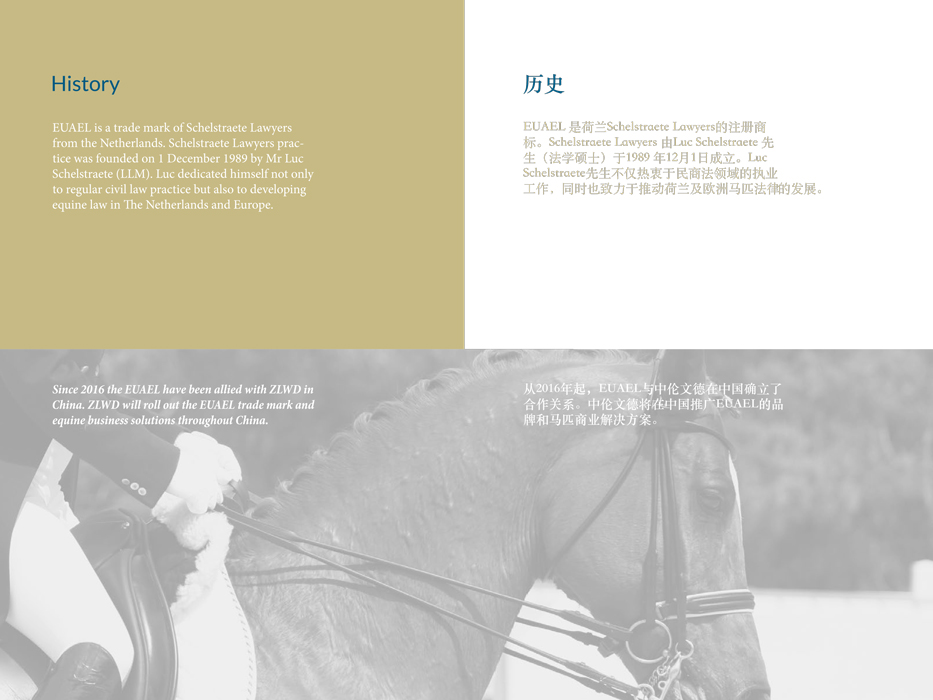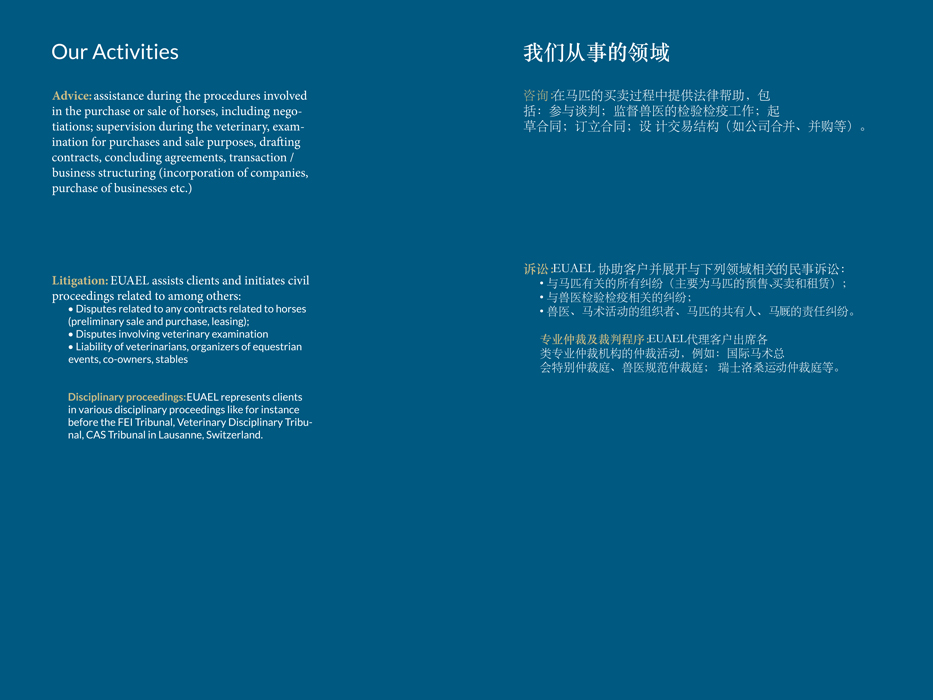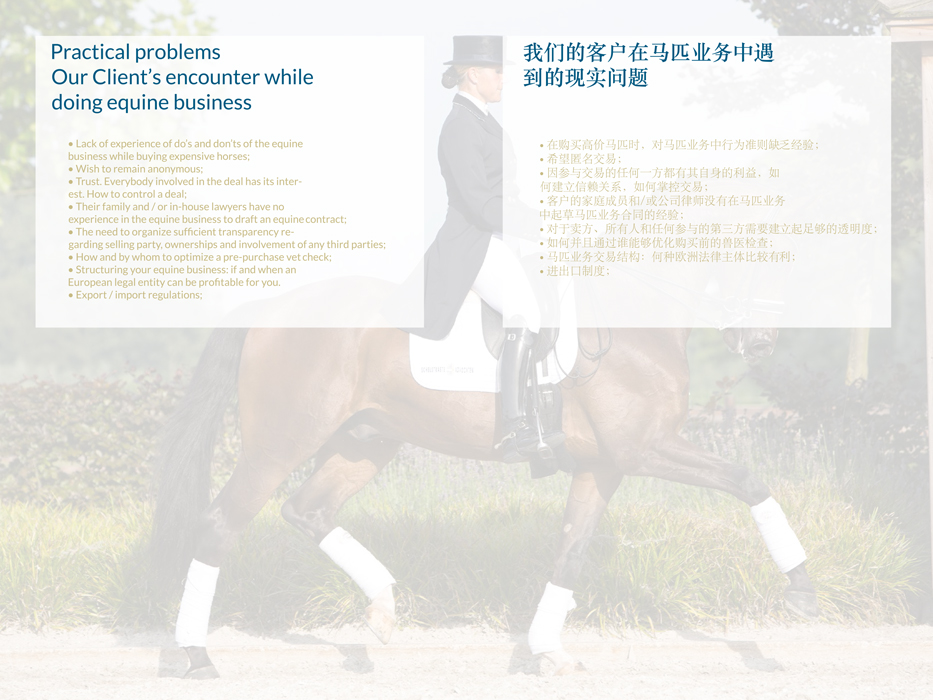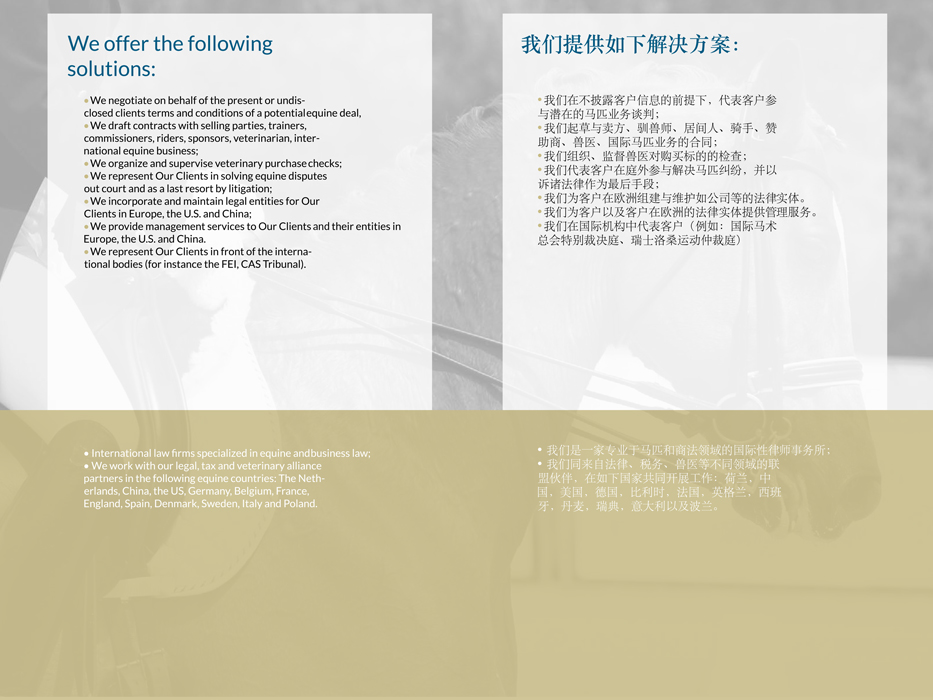Doping: a case involving Strychnine
In this edition of Horse International I would like to share with our readership some thoughts on doping cases. In my daily practice I often represent athletes and horse owners in doping cases pending for instance before the Fédération Equestre Internationale (the “FEI”). In a recent case I represented an equestrian from the Middle East who was very likely in the wrong place at the wrong time. That case involved Strychnine [C21H22N2O2, FW 334.41] and may illustrate that using medicines by humans may cause a positive doping test of an equine and may lead to a violation of the doping regulations.
Risk liability of the Person Responsible
Contrary to criminal proceedings the doping regulations worldwide assume that the person responsible (the term under the FEI jargon for the person accountable for the horse) is guilty until he proves otherwise. In other words, a presumption of innocence by the defendant / person responsible does not apply under the doping regulations. It is the person responsible who needs to prove that he/she is not guilty. Talking about the equestrian sport it boils down to the following: the person responsible accused of a doping violation needs to demonstrate that he/she can explain how a specific substance got into the horse’s system. Stating “I do not know” has no use. This is not an explanation at all because under the doping regulations the strict liability principle applies. Having explained how the prohibited / controlled substance got into the horse’s system, the person responsible has to prove that he/she has not had “significant fault” or “negligence” with regards to the violation of the doping regulations. The factual circumstances of the specific case remain crucial.
In connection with the above case of Strychnine the undersigned travelled recently to a country in the Middle East. This in order to investigate the venue of the event where the violation happened and gather additional information on the case.
Strychnine poison and herbal medicine
Strychnine is an alkaloid derived from the Strychnos nux-vomica tree. This tree is native to India and to southeast Asia. Strychnine is a neurotoxin that inhibits the neurotransmitters glycine and acetylcholine in the central nervous system, interfering with the inhibitory effect of glycine on motor neurons. The effect of Strychnine is lowering of the threshold for muscle contractions. The clinical signs of a Strychnine overdose are spasms.
Extracts of the seeds and bark of the Strychnos spp. plants have been used over centuries as remedies for many conditions of humans especially in traditional medicine in India, China and southeast Asia. Traditional medicine in this part of the world recommends Nux Vomica inter alia for stomach problem, vomiting, abdominal pain, constipation, intestinal irritation, hangovers, heartburn, insomnia, certain heart diseases, circulatory problems, eye diseases, depression, migraine headaches, nervous conditions, problems related to menopause, and respiratory diseases in the elderly. In folk medicine, it is used as a healing tonic and appetite stimulant. Nux vomica is a common homeopathic medicine prescribed for digestive problems, sensitivity to cold, and irritability. In Hindi Nux Vomica may be referred to as: जहर jahar, कजरा kajara, कुचला kuchala.
During the investigation in the Middle East the undersigned visited various pharmacies making inquiries about the availability of Strychnine. Strychnine was not available at those pharmacies. Neither it was available on the market. Inquiries were also made into homeopathic and/or herbal medicines containing Strychnine like for instance Nux vomica. Again, we were told that Nux vomica was not available at the pharmacies. By the way, also when it comes to the use of Strychnine as a rodenticide such was not registered in the respective country in the Middle East. As it seems it is a global trend that rodenticides containing Strychnine are being withdrawn from the market.
Irrelevant Urinary Concentration
The investigation on the location of the equestrian facility where the violation took place is in the Middle East proved that there were no Nux vomica trees around whose seeds could have caused the cross-contamination. Furthermore, Strychnine turned not registered as a rodenticide in that country either. The rat poison used at the equestrian facility itself did not contain Strychnine. In addition, the analysis of the A and B samples collected from the horse revealed a urinary concentration of Strychnine below 1% of what is expected from the therapeutic dose. In other words, Strychnine had no clinical relevance at all. Neither it had any influence on the performance of the horse. With regards thereto it should be mentioned that in 2002, the French Pharmacologist, Pierre Toutain, first acknowledged this concept and recommended that drugs whose effects are driven reversibly by plasma concentration, be regulated by the determination of their irrelevant plasma/blood or urinary concentrations. Pierre Toutain is of the view that any level below 1% of what is expected from the therapeutic dose is consistent with an irrelevant Plasma or Urinary Concentration. The FEI does not recognize this concept (yet). An irrelevant Plasma or Urinary Concentration may influence the sanction as such but is not relevant for the violation itself.
Traditional medicine / human source of cross-contamination
In the science it has been also acknowledged that Strychnine in human urine demonstrates a significant risk for contamination of a horse. Strychnine is eliminated unchanged in the urine and may be present in concentrations in excess of 59 ng/mL. Going back to our case in the Middle East it turned out during the investigation that the box where the horse had been stabled during the event was the most distant from the lavatories. Getting to a lavatory would mean going out of the FEI stables and passing through the main entrance of the indoor arena (100m – 200m). The investigation at the equestrian facility also revealed that the vast majority of the employees were from India and more in general of Asian descent. In other words, the employees were coming from the countries in which Strychnos Nux Vomica tree grows and finds its applicability in traditional medicines. For instance, the ancient Indian medicine of Ayurveda recommends Nux vomica for treatment of various health issues. Strychnos nux-vomica is also, included in proprietary Chinese medicines, including “Maqianzi Powder”, “Jiufen Powder”, “Fengshimaqian Tablet”, “Shufengdingtong Pill”, “Shenjinhuoluo Pill”, “Biqi Capsule”.
Considering that the equestrian facility employed many employees from India and the Indian subcontinent as well as the fact that the horse in question was the only one positive on Strychnine during the event with a relatively low dosage, a cross-contamination with human urine seems very likely to be the cause of the positive doping test. The toxicologist analysing the samples A and B stated in her report that the dosage was Irrelevant Urinary Concentration of Strychnine. The toxicologist also stated that the Urinary level of Strychnine in the horse was 0.6 ng/mL. If the horse had been exposed to the drug one to two hours prior to being tested at the event, the total dose of Strychnine required to achieve this inconsequential level of Strychnine would have been 510 ng. This level would have required less than a drop of urine from a human source contaminating the environment of the horse.
In this context we need to keep in mind the cultural background of the employees of the equestrian facility. Reportedly, it is not uncommon in India to urinate on street. At this moment further investigations are taking place in the Middle East in order to interview the employees who worked there during the event. The aim is to establish the source of this cross-contamination. The total group of the Indian / Asian employees at the facility amounts to 200. This group needs to be narrowed down to those who were at the venue during the event. Hopefully, this will help discover the source of contamination. Once the source has been found, then the athlete shall be able to explain how Strychnine got into the horse’s system.
Conclusion
This case demonstrates again the seriousness of the strict liability principle under the doping regulations in the equestrian sports. The person responsible may be exposed to various external risks he may not even foresee and he may not be aware of. Having investigated this case at the venue of the event, seeing large number of the employees having unlimited access to the stables, I think it is not surprising that so many – at first sight unexplainable – doping cases occur in the Middle East compared for instance to Europe or the United States. I am convinced that in many cases it is not the person responsible who is to blame for the violation. The FEI rules and regulations are very strict and it is obviously good that they are so but on the other hand when an event is organized under the auspices of the FEI, it should the FEI who shall oblige the organizing committee to implement proper safety and security measures at the venue to mitigate the risks for riders and owners of the horses.
This article was previously published in Horse International.
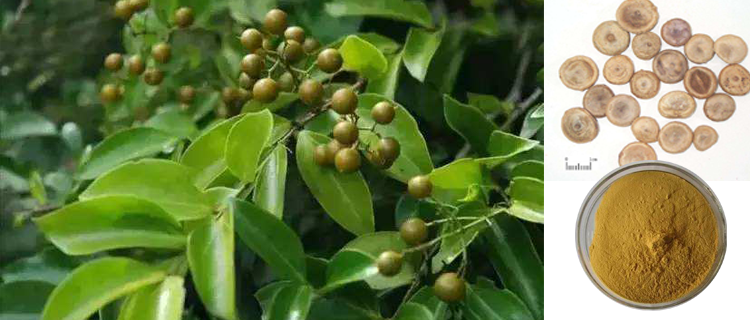 T12_HI_LegalJournal P_2214331 (003)
T12_HI_LegalJournal P_2214331 (003)
